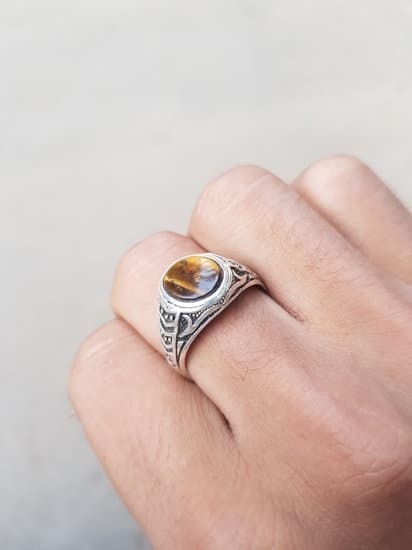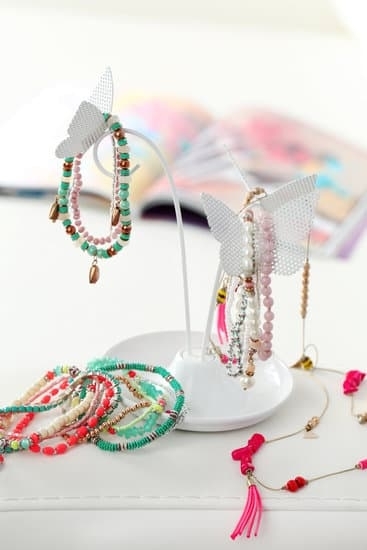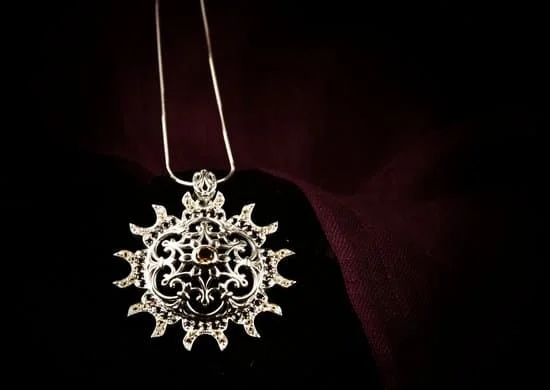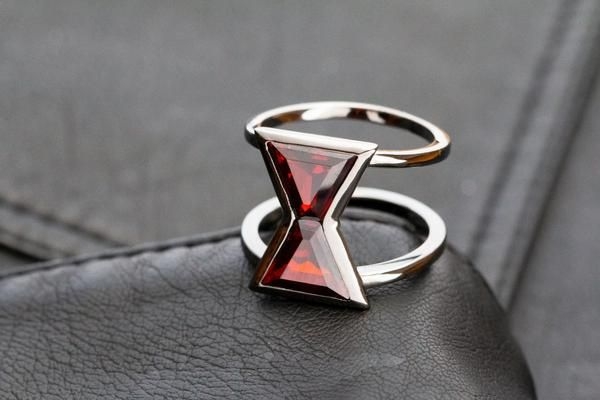Victorian era costume jewelry is considered highly desirable and collectible for its stunning design, quality craftsmanship, and stunning symbolism that often embody the sentiment of the era. Aesthetically, Victorian era costume jewelry brought us some of the most exquisite styles from Victorian-era. Drawing inspiration from Gothic revival of the Middle Ages and Renaissance eras, these items were known for their large designs, intricate detailing, symbolic motifs, and an extensive selection of precious stones and settings.
For many collectors, this is a tremendously rewarding period in jewelry history to collect because there are so many styles to explore as well as a range of prices. Victorian era costume jewelry can be found in estate auctions or online stores in a variety of materials including gold, silver, brass and other metals. The range depends on personal preference or what is available in local antique shops or boutiques online.
Generally speaking the higher quality pieces will fetch a higher price but due to its popularity not all pieces need to be expensive investments. Victoria used only finest-quality gemstones set into 14ct gold or gold-filled settings which remain entirely intact and attractive today giving authenticity that many modern-day counterparts simply cannot compete with.
When looking for original Victorian era costume jewelry one should look for hallmarks (such as British hallmarks) which indicate where it was manufactured. It is also important when finding original pieces to ask questions such as ‘Was this piece ever altered?’
Other details that could suggest this may have been modified include repairs made to settings or elements replaced with different materials/gems than what they originally contained. Of course checking condition is also essential – scratches, chips or loose stones can affect value so careful inspection ensures no last minute surprises after purchasing.
Defining Factors of Victorian Era Costume Jewelry
The Victorian Era was a period of prosperous growth for luxury goods and jewelry makers. From synthetic stones to gold, silver, and even fabric or paper-based adornments, costume jewelry of the Victorian period is immensely varied.
Popular materials used included enamels, glass, pearls, gemstones, tortoiseshell, bone ivory, wood and semi-precious metals such as brass or copper. While diamond and gold were reserved for more expensive pieces during this era, costume jewelry was often crafted from less expensive materials in order to be more accessible.
One particular technique that characterized costume jewelry from the Victorian Era was Mosaic work which involved inserting small pieces of colored glass into complex designs set in black lacquer backgrounds. This type of jewelry is particularly recognizable due to its wide use of color and the intricate details that combine to form complex images-many featuring naturalistic scenes inspired by classical artworks.
In addition to Mosaic work, costume jewelry from this era often featured colorful stones like agate and hematite set in gold plated pendants or cameo-style earrings set in frames made from gold filled wire with filigree details.
Another defining factor of Victorian Era Costume Jewelry was its use of gemstones. At a time when diamonds were identified with weddings, many alternative colored gemstones became symbols for different emotions or occasions such as garnets which symbolized loyalty or amethysts that stood for protection against harmful influences.
Additionally some gems such as rubies were thought to have magical powers so they were commonly given as gifts that ward off misfortune – demonstrating their power to protect those who wore them in everyday life too.
Identifying Genuine Victorian Era Costume Jewelry
The Victorian Era was a period which spanned from 1837-1901 and was characterized by large, ornate costume jewelry. During this period, there were no specific regulation regarding the manufacture of costume jewelry so each piece was original and unique in their own way. As such, it is important to keep an eye out for certain key markers and characteristics when identifying genuine Victorian Era costume jewelry.
First and foremost, it is helpful to be on the lookout for identifying marks that can help determine the origin of the piece. This can include hallmarks, stamped words or initials, maker’s marks, locket shapes and more.
For instance, some Victorians would use a stylized B with a circle around them to represent Birmingham which is also known as “bi-metal” since they chose to use silver-plated over gold-plated metal pieces in order to give their costumes more shine and sparkle. Furthermore, other techniques such as plain frames or simple designs on setting often signify that a product comes from an earlier part this era proving its authenticity even further.
In addition to looking out for manufacturer markings or signs, one should also have a feel for what precious stones were used at the time along with examining the material composition and techniques used in construction. For example authentic Victorian pieces often use pearls of differing sizes because this type of natural stone was abundant during this era whereas today it would be much costlier to obtain them.
Further still when considering style details like engraving, special beads or gemstones set into enamel you may wantto do research into motifs of the time in order to discover if these were common practice among costume makers at that point in history. Doing these things gives extra assurance when investing in antique clothing accessories.
Overall understanding how differentiating real pieces from reproductions when it comes to identifying genuine Victorian Era costume jewelry becomes easier when you focus on both manufacturer information along with style elements integral for jewellery manufacturers of yester years. With a keen eye you’ll be well on your way towards discovering some incredible pieces.
Notable Pieces of Victorian Era Costume Jewelry
The Victorian era was a time of romantic and luxurious jewelry designs, favoring natural motifs. From relics to cameos, the era produced some of the most famous pieces of costume jewelry that are still popular today. The iconic drop earrings were often crafted in gold or precious stones and had an array of symbols set into them. Ornamental crosses and anchors often spoke to spiritual beliefs or an affiliation with one’s home country.
Cameos, which featured portraits of prominent individuals, mythological scenes, flowers or animals depicted important figures or stories. Figurines generally focused on nature themes like birds or butterflies, as well as fanciful Lady Liberty-style images complete with crowns, American flags and stars. The symbolism behind many of these pieces served as a reminder of eternity or significant events in one’s life.
The materials used to craft Victorian jewelry varied greatly; everything from precious metals to the more commonly used base metals such as bronze, brass and copper were popular during this period. Steel was also used for larger pieces like necklaces and chokers due to its durability for everyday wear.
Precious gemstones were often added for their beauty and splendor provided a hint of status for wearers who chose them. Pearls were especially prized during this era for their look of delicate refinement that was highly sought after by wealthy socialites at the time.
Timepieces played a large role in this era’s fashion trends with pocket watches being particularly popular accessories amongst menfolk of the period. Elaborate lockets featuring wildlife imagery adorned many ladies necks while brooches pinned delicately at the collar aided both men and women in keeping clothing fastened closed without adversely effecting overall style appeal.
Many clocks also featured pendulums suspended behind intricate glass frames giving gorgeous displays when wound up properly. When it comes to Victorian era costume jewelry, there is truly something for everyone looking for unique design elements influenced by historic means.
Historical Significance of Victorian Era Costume Jewelry
The Victorian Era was a period in history that is strongly associated with art and fashion. During this time, there was a huge increase in the popularity of costume jewelry, which had an influential role on how people dressed during this period. This type of jewelry was bright and bold, often featuring unique designs that utilized intricate details and colorful materials.
These pieces were affordable for many classes of people, and symbolized wealth to those who couldn’t afford more expensive items made from precious metals and jewels. They were fashionable but also practical, as manufactureres could quickly churn out high volumes of these items with relative ease.
This style of costume jewelry was highly symbolic amongst women during the Victorian Era and became widely adopted by high-society women such as Queen Victoria herself. It became seen as a sign of the modernity of the time – its ability to imitate fine jewelry ultimately enabled even everyday individuals to be able to display their power through fashion without spending vast fortunes on real gems or metals.
Its symbolic nature meant that certain pieces even served as symbols of mourning due to their association with death following Queen Victoria’s husband’s passing in 1861. With ever-changing designs crafted from various colorful stones and materials offered at accessible prices, it allowed people from all classes to express themselves through fashion which helped solidify its relevance during the era.
This kind of costume jewelry continues to live on today having left an indelible mark throughout history not only in terms of fashion culture but also in termsof its ability to essentially democratize personal expression via fashion due tousability by people from different walks of life without breaking the bank.
Its popularity has been unrivaled over the years as birthstones have come in and outof favor along with design trends adapting accordingly allowing consumers aroundthe world access fashionable pieces within different price ranges making costumejewellery relevant still today well over 150 years later since its inceptionduringthe Victorian age.
Care for Victorian Era Costume Jewelry
The Victorian Era, which roughly corresponds with Queen Victoria’s reign of 1837-1901, was actively pioneering in fashion and greatly shaped the common culture to come. From jewelry production came a wealth of beautiful and creative pieces made using rising technologies and the boundless energy of artistic expression.
But with such variety and intricacy amongst pieces from this era comes consideration for how to properly care for them so that their integrity might be maintained. The following is a practical approach to preserve your Victorian Era costume jewelry collection.
When it comes to storage, ideally one should first use precautions against moisture, as it can cause irreversible corrosion. Separating each piece from the other can help minimize contact between like materials, as well as avoid scraping or tangling into each other.
To further minimize exposure to air, encapsulating them in an airtight container or bag helps protect against oxygen in the surrounding environment. All storage materials should be non-abrasive and acid free, with boxes lined with cotton fabric being preferable over plastic bags or rubber bins.
In regards to cleaning pieces from this era, less is more; mild soap mixed with warm water, gently rubbed onto them should be all that is needed in most cases. Aftwards they should be dried thoroughly before being stored away again – doing so by hand is highly recommended over machine drying due to the differences in heat levels used.
Additional compound and chemical cleaners should only be used after extensive research on what would best suit particular materials used in a given piece (such as gold, silver, gemstones etc).
Lastly certain restorative services are available for damaged pieces from this era if deemed necessary. Repairs can be done by some experienced jewelers who specialize in vintage items – preferably after contacting an appraisal expert first – to ensure original aesthetics are preserved as much as possible when making any alterations beyond mere routine cleaning/polishing finished surfaces e.g.
In summary these few practices shall help properly maintain cared for old collections of Victorian Era jewelry pieces into current times and remain visually pleasing right after Queen Victoria’s empire did left off centuries ago.
Where to Find Victorian Era Costume Jewelry
The Victorian Era was a period in history known for its beautiful fashion and jewelry that celebrated the virtues of the time. With it came intricate settings, sparkling gemstones, and stylish aesthetics. While the Victorian Era may have ended long ago, people can still experience this fashion culture today through costume jewelry pieces.
Contemporary Victorian-style jewelry is a trend that continues to make waves around the world. For buyers and collectors interested in finding authentic pieces of iconic costume jewelry from the Victorian Era, there are many different resources available both online and offline.
One great resource is at antique stores or markets like eBay or Etsy. At these locations, you can find carefully crafted vintage pieces from notable eras including: Georgian (1714 – 1837), Victorian (1837-1901), Edwardian (1901-1910), and Art Nouveau (1890-1915).
With designers like Charles Horner, Vantine’s, Castlecliff, Trifari, Coro Craft jewelry etc., visitors will find a collection of stunning items to add to their inventory or personal collection. It’s important to note that while these items are generally considered as ‘vintage’ they may vary in condition ranging from mint to used or antiques depending on the particular item being purchased or sold.
Another option for sourcing vintage items is through publications such as newsstand magazines or books that feature collections of costume jewelry popular during the era. These offer insight into what people were wearing over time and allows buyers to compare past styles with current trends.
Finally free classified sites like Craigslist or FreeCycle can be good resources for those looking to buy single pieces at great prices – often times from local dealers who specialize in costumes from this specific period in history. The benefit with these sites is that buyers can check out various offerings quickly before committing to any purchase and get advice on enhancements if desired.
Conclusion
The Victorian Era was an important and influential period of fashion, society, culture and art. A unique aspect of this time period were the stunning costume jewelry pieces that became popular during this era. Jewelry served as a way to accessorize outfits, righting style wrongs and adding splashes of pizzazz to even the most boring ensembles.
While somewhat affordable by today’s standards, due to its mass-production, fashions from this era weren’t typically accessible for poorer classes. In modern times these jewels are adored for their sentimental beauty and intricate detailing.
In terms of design, floral patterns like roses, forget-me-nots and lilies with vibrant colors dominated the scene. It wasn’t just a trend; it was a fashion statement meant to express emotions like love and friendship through design.
Not only popular among women as necklaces and earrings but also rings were commonly seen – primarily used among unmarried women or widows to broadcast their availability or lack thereof. To keep in line with societal standards set in place by the bourgeoisie class, without breaking tradition too drastically or at all.
Victorian Era Costume Jewelry was no doubt a thing of beauty both back then and now. Its bold designs represented true romanticism while also hinting at power – becoming a symbol of wealth even when not necessarily possessed by its wearer. They spoke louder than words in terms of what people truly felt about one another with beauty that can still be appreciated in modern times today days due to its classic timelessness.

Welcome to my jewelry blog! My name is Sarah and I am the owner of this blog.
I love making jewelry and sharing my creations with others.
So whether you’re someone who loves wearing jewelry yourself or simply enjoys learning about it, be sure to check out my blog for insightful posts on everything related to this exciting topic!





